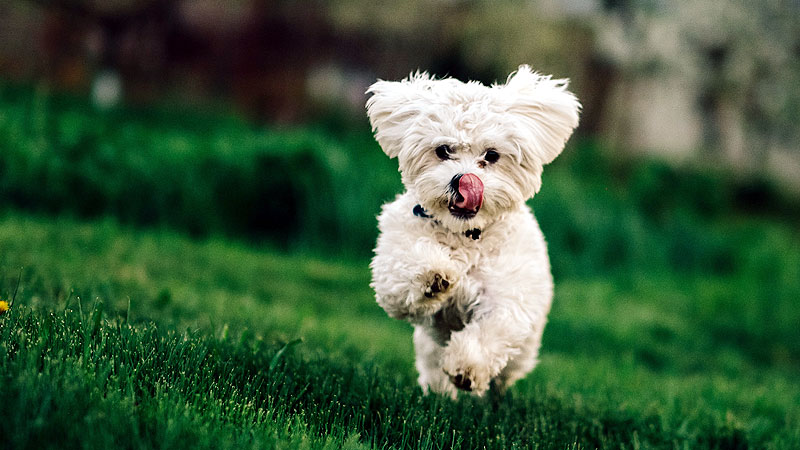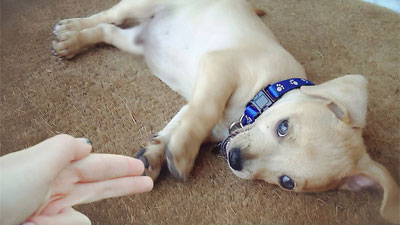- Size
- Smallest
- Small
- Small to Medium
- Medium
- Large
- Giant
- Characteristics
- Smartest
- Hypoallergenic
- Fluffy
- Best Guard
- Best Family
- Best for Kids
- Low Shedding
- Healthiest
- Police Dogs
- Most Calm
- Quietest
- Color
- White
- Black
- Grey
- Brown
- Blue
- Red
- Coat
- Hairless
- Short
- Long
- Origin
- Japan
- China
- Australia
- Germany
- Italy
- United States
- France
- Group
- Hound
- Terrier
- Herding
- Toy
- Working
- Sporting
How to Teach a Dog to Come When Called: The Recall Command Guide

Photo by Gabriel Crismariu on Unsplash
Dogs are naturally curious creatures, easily enticed by their surroundings. Each time you call your dog to come, you're asking them to divert their attention from whatever has captured their interest. To establish a reliable recall, you must make being near you the most appealing and rewarding option for your pet.
Having a strong recall command is essential for every dog owner. Imagine the peace of mind that comes with knowing your furry friend will come running to you whenever you call, regardless of distractions or circumstances. While achieving a reliable recall may seem like a daunting task, it is entirely possible with the right techniques and consistent training.
In this article, we will explore various strategies and tips that will help you train your dog to come every time you call.
Essential Techniques for Effective Recall Training
Step 1: Start in a Controlled Environment
Begin recall training in a calm, low-distraction setting such as your home or a quiet backyard. This controlled environment allows your dog to focus on learning the desired behavior without being overwhelmed by external stimuli. As your dog becomes more reliable in this environment, gradually introduce new locations with increasing distractions to generalize the recall command.
Step 2: Use Positive Reinforcement
Positive reinforcement is an essential component of recall training. Reward your dog with treats, praise, or a favorite toy immediately after they respond to your recall command. Associate the act of coming to you with positive experiences and rewards to motivate your dog to repeat the behavior. Consistency in rewarding reinforces the recall behavior and strengthens the bond between you and your furry friend.
Step 3: Establish Clear Verbal Cues
Consistency in verbal cues is crucial for effective recall training. Choose a word or phrase that will serve as your recall command, such as "come," "here," or "recall." Use a confident tone of voice when giving the command, ensuring it stands out from everyday speech. Be mindful of using the recall command sparingly outside of training sessions to avoid "poisoning" or diluting its effectiveness.
Step 4: Leash Training and Long Line Work
Introducing recall training on a leash or long line provides additional control and safety during the learning process. Attach a long leash or a lightweight training lead to your dog's collar or harness, allowing them freedom while still maintaining physical control. Practice recall exercises, gradually increasing the length of the line, as your dog's response improves. This technique prevents your dog from ignoring the recall command and reinforces the importance of coming to you each time.
Step 5: Practice Distraction Training
To strengthen recall reliability, incorporate distraction training gradually. Start with mild distractions, such as toys or low-level environmental stimuli, and reinforce the recall response when your dog comes to you. As your dog progresses, gradually introduce higher levels of distractions, including other dogs, people, or temptations like food. Consistently reward your dog for successfully ignoring distractions and focusing on your recall command.
Step 6: Incorporate Recall Games
Making recall training fun through interactive games can increase your dog's motivation and engagement. Some popular recall games include "Catch Me" and "Find Me." In "Catch Me," encourage your dog to chase you by turning and running a short distance before calling them to come. "Find Me" involves calling your dog from another room, rewarding them when they find you. These games reinforce the joy of coming to you and enhance the bond between you and your dog.
Troubleshooting and Refinement
1. Avoid Overusing the Cue:
Refrain from repetitively using the recall command, which can lead to your dog ignoring the cue. Instead, make each recall a positive and rewarding experience.
2. Change the Cue if Necessary:
If your dog shows signs of ignoring the recall command, consider changing the verbal cue to start anew.
3. Maintain Positive Associations:
Always maintain a positive atmosphere during training. Never scold or punish your dog for delayed responses.
Conclusion
Mastering recall is an ongoing process that requires patience, dedication, and positive reinforcement. By creating a rewarding and enjoyable experience for your dog every time they respond to your recall, you're building a strong foundation for a reliable and consistent response. Embrace the journey of training your dog to come every time you call, enhancing their safety, freedom, and the bond between you.
You May Also Like
 Dog Training TipsTrain Your Dog to Play Dead: A Step-by-Step Guide
Dog Training TipsTrain Your Dog to Play Dead: A Step-by-Step Guide Dog Training TipsTrain Your Dog to Roll Over: A Step-by-Step Guide
Dog Training TipsTrain Your Dog to Roll Over: A Step-by-Step Guide Dog Training TipsTeaching Your Dog the "Sitting Pretty" or "Beg" Trick
Dog Training TipsTeaching Your Dog the "Sitting Pretty" or "Beg" Trick Dog Training TipsTraining Your Dog to Spin: A Step-by-Step Guide
Dog Training TipsTraining Your Dog to Spin: A Step-by-Step Guide Dog Training TipsTeaching Your Dog to Wave Goodbye: A Step-by-Step Guide
Dog Training TipsTeaching Your Dog to Wave Goodbye: A Step-by-Step Guide Dog Training TipsTeaching Your Dog the Classic Trick: Shake Hands
Dog Training TipsTeaching Your Dog the Classic Trick: Shake Hands